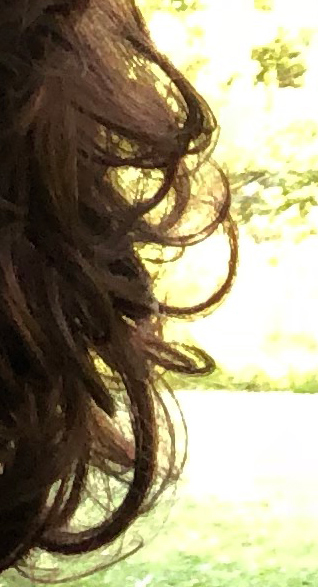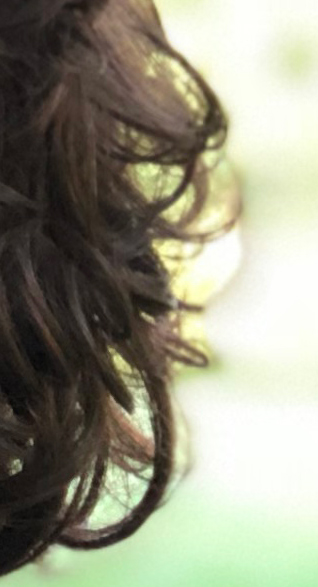Best Portrait Cameras Under $1,000: Special Situations
Seven cameras, eight lenses compared, one stood outPage 3: Specialty shooting scenarios
By Dave Pardue, William Brawley and Dave Etchells
Posted: 06/15/2018
We've now shown comparison examples in both normal outdoor light as well as typical lower light situations. But how about bright midday sun? While far from the best conditions in which to be shooting portraits, you may not have a choice depending on the wedding, graduation ceremony or whatever event you're attending. When it comes to isolating your subject from the background, the biggest issue we've seen (and this is especially true of budget cameras) is whether or not a camera model offers a sufficiently fast shutter speed. Many DSLRs offer mechanical shutter speeds up to 1/8000s, which can work, depending on the lens' aperture and the light level. Unfortunately, many entry-level DSLRs cap shutter speeds at just 1/4000s, putting you further at risk for overexposed images when using a prime lens wide open in bright sun. To get properly exposed shots, you're then forced to stop the lens down, sacrificing background separation potential.
However, a number of budget cameras, mostly mirrorless models, now provide an electronic shutter option that gives you faster shutter speeds than the mechanical shutter when needed. We'll take a closer look at that here, using a few of the competitors. Electronic shutter has two primary advantages for portrait scenarios. As just noted, a big advantage is the ability to allow for a super-fast shutter speed in bright light, so that you can still take advantage of a wide aperture lens and provide good subject-to-background isolation without over-exposing your image. Another significant advantage of electronic shutter is simply the ability to fire quietly, which can come in handy depending on your situation and circumstances.
Some of the camera models in this shootout have electronic shutter as an option, while others don't, so we took one of each and headed out on a bright Georgia day in May. As expected, the super-bright midday sun did dictate that we had to stop down the lens on the camera lacking an electronic shutter. This of course meant the camera couldn't achieve quite as much subject/background isolation as the one with the electronic shutter.
Shooting portraits in bright light with electronic shutter
Once again taking Gena, Lois and Lisa out for the excusrion, in addition to both our resident Gibson SG and Fender Telecaster guitars for another common background reference, this shoot took place late-morning in full spring sun.
Olympus E-M10 III + 45mm f/1.8
Panasonic GX850 + 42.5mm f/1.7
Of course, there are disadvantages to using electronic shutter as well, most notably when your subjects are in motion as this can often result in a "jello effect," or rolling shutter effect, in which subjects become distorted due to the way the data is read off the sensor line-by-line while in electronic shutter mode. But for most static portrait work this will rarely if ever be an issue.
Using "Portrait Mode" with an iPhone 8 Plus
As they say, the "best camera is the one you have with you," and for many folks, the iPhone or other smartphone in your pocket will work in a pinch to capture that group shot or portrait. However, if you're wanting that classic portrait look, with nice subject isolation and a blurred background, smartphones are at a major disadvantage. The phone's image sensor is super-tiny compared to the other cameras in this shootout, and while the iPhone 8 Plus, in this case, has a 56mm-eq. telephoto camera with an f/2.8 aperture, the sensor is way too small to create that pleasing portrait look all by itself. This is why Apple and other smartphone makers have started creating "Portrait Mode" features that use their dual cameras and/or a combination of fancy computational trickery to simulate the shallow depth of field and blurry backgrounds created by cameras with larger sensors and wide-aperture lenses.
But... how well do such features work? Let's take a closer look.
When looking at the whole scene, the Portrait Mode shot seems to do a decent job of simulating that shallow depth of field look, but as we saw back in our iPhone 8 Plus Field Test, the iPhone's Portrait Mode is far from foolproof. Because the phone is using computational methods to decide what should be blurred and what shouldn't, it's easy for it to get confused, blurring things that shouldn't be blurred and vice versa. The shot below shows clear examples of this problem, so be aware when using the mode that it does have obvious drawbacks.
For more information about the iPhone 8 Plus and its Portrait Mode, check out our iPhone 8+ Field Test. We also Field Tested the Google Pixel 2, which has its own Portrait Mode feature and likewise shows blurring issues similar to the iPhone.
Take me to Page 4!
• • •
The Best Portrait Camera and Lens Under $1000
Page 1: Shooting portraits in everyday light
Page 2: Turning the lights down!
Page 3: Specialty shooting scenarios (here)
Conclusion: A First Among Equals
Note: The Reader Comment section on these pages is not working at the moment. We're working on it!



Follow Imaging Resource: